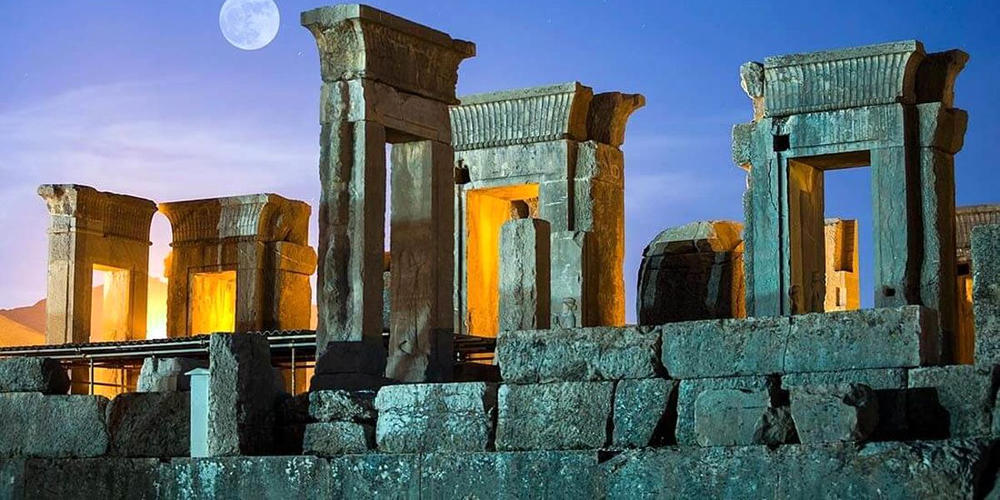

Iran has long been considered the cradle of civilization, and there is undoubtedly merit to this claim. It results from the amazing empires that ruled during Iran’s illustrious history. Many significant contributions conducted by the Ancient Persians helped shape the civilization we know today. The ancient history of Iran will now be discussed, along with the mysteries that have been discovered and understood thus far:
Prehistoric Iran: Unveiling the Origins
Iran’s early history may be split into three sections:
Prehistory
Iran’s prehistoric period is largely documented through archaeological artifacts, with early excavations occurring only at a few select locations. The study of prehistoric Iran has undergone a revolution since 1950 because of the resurgence of Iranian archaeology following World War II. The historian is still depending on archaeological data during the proto-historic period, although textual sources provide a lot of information. While some sources are local but not current, such as conventional Iranian folklore and tales that purport to describe events in the early first millennium BC, others are local but not contemporary. Some are useful in recreating events from the proto-historic period even if they are neither local nor current.
Paleolithic (ca. 100,000-10,000B.C.E)
An enigmatic surface discovery in the Baktaran Valley provides proof that humans have lived on the Iranian Plateau from the Lower Palaeolithic period. Deposits from a number of excavated cave and rock shelter sites, mostly in western Iran’s Zagros Mountains, date to the Middle Palaeolithic or Mousterian period (about 100,000 BC), and they include the earliest established proof of human settlement. In contrast to the clearly identified Middle Palaeolithic businesses recognized elsewhere in the Middle East, the Mousterian flint-tool industry discovered there is distinguished by the lack of the Levallois technique of flint chipping.
Locally, the Upper Palaeolithic Baradostian flint industry comes after the Mousterian. Radiocarbon dating indicates that it may have begun as early as 36,000 BC, making it one of the earliest Upper Palaeolithic structures in the history of Iran. It’s possible that the Baradostian was superseded by a regional Upper Palaeolithic industry termed the Zarzi following some type of cultural and typological gap.
The Mesolithic (ca. 10,000-5500 B.C.E)
One of the first regions in the Old World to undergo the Neolithic revolution was the Middle East. The establishment of settled village agriculture throughout this revolution was strongly grounded on the domestication of both plants and animals. Iran has produced a wealth of information on the past of these significant events.
Important western Iranian sites including Guran, Asiab, Ali Kosh and Ganj-e Dareh provide evidence of substantial changes in tool production, settlement patterns, and sustenance practices throughout the early Mesolithic, including the shaky origins of domestication of animals as well as plants. These community agricultural practices had spread widely by around 6,000 BC over most of the Iranian Plateau and low-lying Khuzestan. Tepe Sialk I on the edge of the central salt desert, Hajji Firuz in Azerbaijan, Tepe Sabz in Khuzestan, Tepe Yahya VI C-E in the southeast and Godin Tepe VII in northern Luristan have all shown evidence of rather advanced agricultural systems.
Elamite Kingdom: Ancient Civilizations in the Iranian Plateau
A civilization known as Elam lived in the area that is now southwest Iran. Elam was centered in modern-day Iran’s extreme west and southwest, extending from the Khuzestan and Ilam Province lowlands as well as a tiny portion of southern Iraq.
Elam, which is nearby Mesopotamia to the east, took part in the Chalcolithic period’s early urbanization. Similar to Mesopotamian history, writing began to appear approximately 3000 BC. During the Old Elamite period (Middle Bronze Age), Elam was made up of kingdoms on the Iranian plateau, with Anshan serving as their capital. Elam was based in the Khuzestan lowlands, with Susa serving as its capital, beginning about halfway through the 2nd millennium BC. Particularly under the Achaemenid dynasty that followed, when the Elamite language continued to be one of those in use in official settings, its culture was essential to the Gutian Empire.
Elamite appears to be a linguistic isolation, similar to Sumerian, with no known relationships to any other languages.
Achaemenid Empire: The Rise and Legacy of Cyrus the Great
Cyrus the Great established the ancient Iranian empire known as the Achaemenid Empire, sometimes known as the Achaemenian Empire, in 550 BC. It is one of the most important eras in the history of Iran. With a territory of 5.5 million square kilometers (2.1 million square miles), it was the greatest empire the world had ever seen, extending from Egypt and the Balkans in the west to Indus Valley and Central Asia the in the east. It was honored for its effective example of centralized bureaucratic administration, multicultural policies, construction of intricate infrastructure, adoption of official languages throughout all of its regions, and growth of civil services.

Alexander the Great’s conquest of the Achaemenid Empire in 330 BC was a significant victory in the Macedonian Empire’s continuing battle at the time. The vast majority of the territory once inhabited by the former Achaemenid Empire was controlled by the Ptolemaic Kingdom and the Seleucid Empire, which were both which were created as the Macedonian Empire’s predecessors following the Partition of Triparadisus in 321 BC. The Hellenistic era officially began with Alexander’s death. Hellenistic dominion endured for over a century previous to the Iranian aristocrats of the central plains regaining power during the Parthian Empire.
Parthian Empire: The Confluence of East and West

From 247 BC until 224 AD, the Parthian Empire, otherwise known as the Arsacid Empire, greatly ruled Iran and contributed to Iranian culture and politics. The tribe’s progenitor, Arsaces I, guided the Parni tribe in capturing the northeastern Iranian province of Parthia. Mithridates I expanded the borders by taking Media and Mesopotamia back from the Seleucids.
The Parthian Empire reached as far as modern-day Afghanistan and western Pakistan at its height, from the Euphrates’ northern reaches in what is now central-eastern Turkey. The Greek civilization that had developed in Iran throughout the Seleucid era was highly regarded by the Parthians, and several Parthian rulers were knowledgeable about Greek literature. The religious parliament and the noble parliament of the Zoroastrian priests made up the parliament Mahestan, which was made up of two parliaments.
